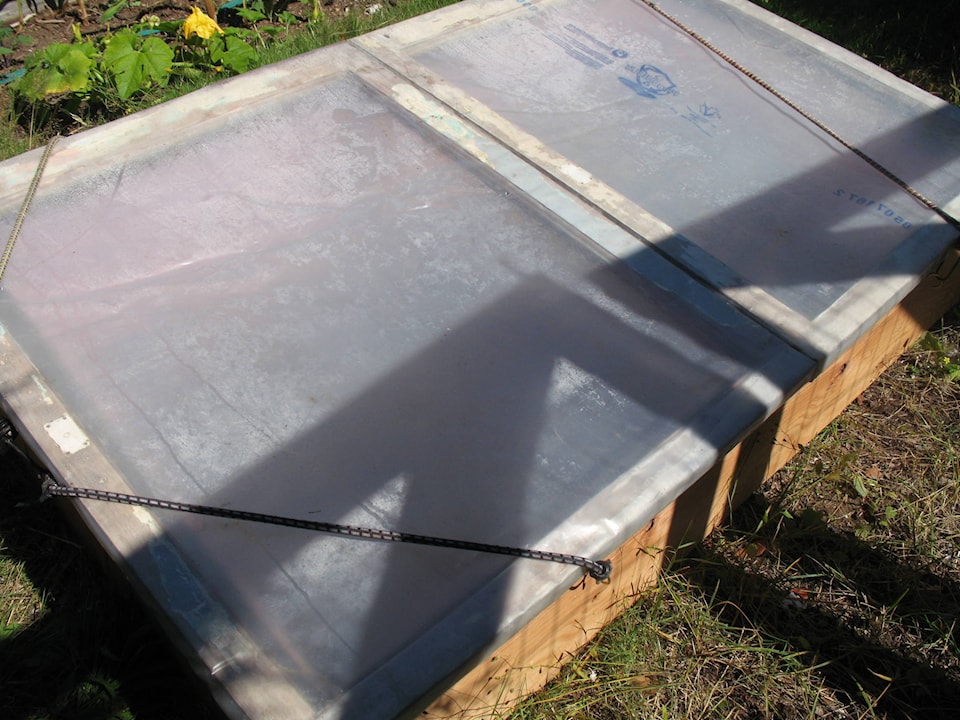By Mary Lowther
Just because my attempts to produce something edible in a cold frame during winter over the last 13 years have failed, I’m not beaten. Fresh spinach in December would be nice. Author Binda Colebrooke writes about growing crops right through the winter in her book Winter Gardening, encouraging gardeners to make the most of this climate, and if she can do it, so can I.
A cold frame is a solid structure that covers crops to keep them warmer than the outside, thus extending their growing season. Colebrooke recommends the use of portable cold frames or plastic tunnels that can be removed and moved elsewhere as the need arises. Thus, next spring when my winter vegetables no longer need the frame, I can place it over spring vegetables that would benefit from the extra heat.
For our climate, Colebrooke suggests we sow or transplant the following crops in cold frames in September: cabbage, cilantro, lettuce, mustards, radish, rocket and spinach. In October we can also sow or transplant corn salad, lettuce, mustards and rocket.
My downfall has been slugs and wood bugs that appear from nowhere to inhabit the lovely warm quarters I have stocked with food they thought was just for them, but this year I’m going to show them who’s boss. I learned that slugs and wood bugs are attracted to wood, so I lined the box with Styrofoam insulation. David’s friend assured him that a few inches of sand around the plants deters these critters, so I’ll hunt a couple of bucketfuls down to spread over the soil, raise my seedlings in flats inside and plant them through the sand, into the soil.
My previous cold frame was a massive, coffin-like structure not meant to be moved, so this month David made me a light four by three foot bottomless box out of quarter inch plywood nailed to a wooden frame made of 1 inch by 1 inch thick pieces of wood. The back side is 15 inches high, the front is nine inches and the sides slope down between them. I covered two second hand windows on both sides with plastic sheeting and stapled this onto the window frames to use as lids, then puzzled over how to attach them. The windows had metal edges so we couldn’t use hinges, so I figured bungy cords might fit the bill. I had hooks and the cords, so I just screwed in the hooks to the box and stretched them over the windows to hold them down. When it gets too hot, I’ll just undo the cords and pull the windows right off. When it’s too cold I’ll cover the whole shebang with blankets. I may also store jugs of water inside that absorb heat from the sun during the day and release this heat at night to keep the plants warm.
Please contact mary_lowther@yahoo.ca with questions and suggestions since I need all the help I can get.
